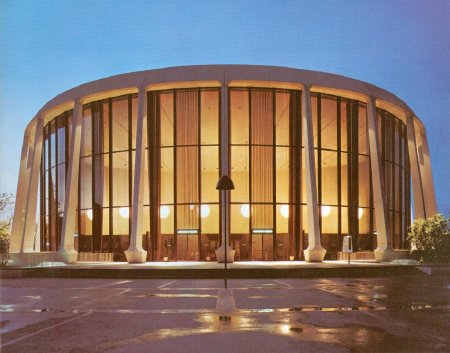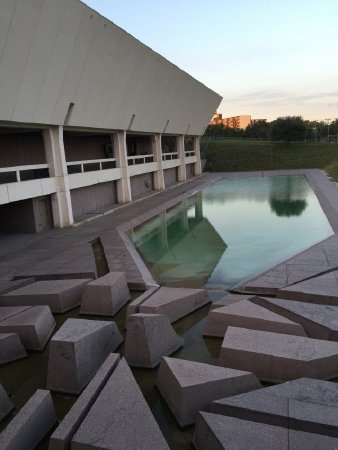The Federal and State Pavilions After the Fair
History:
Both the Federal Government and the State of Texas invested in constructing substantial buildings that would continue to serve citizens beyond the fair's six-month run. The Institute of Texan Cultures, affiliated with the University of Texas, quickly reopened as an unorthodox museum. Besides creating exhibits, the staff set out to build a large, central repository of pictures and information on Texas subjects that they could transform into publications, films and traveling exhibits geared towards the average person. The Institute ably fulfilled this mission, also hosting the popular Texas Folklife Festival, for nearly fifty years. In the summer of 2016, and again in 2017, the University began seeking proposals for the redevelopment of the property. With no firm commitment to preservation on the part of UT or the City, the fate of one of HemisFair's largest and most distinctive original buildings remains uncertain.
A new use for the round Confluence Theater proved more challenging, but Federal Judge Adrian A. Spears suggested a solution. "I had an idea," he said, "that the beautiful Confluence Theater would save tax payers a lot of money if it was converted into part of a federal complex planned for this area. In 1972, work began under the guidance of original architects Marmon Mok to transform the theater into a four-story federal courthouse." This innovative design feat opened in 1975 and was named to honor Federal Judge John H. Wood, Jr. after he was murdered in 1979. The federal government renamed the former Exhibit Hall nearby for Judge Spears in 2000. Both buildings, considered endangered in 2016, will have preservation covenants once the new federal courthouse opens and the General Services Administration transfers ownership of the buildings to the City.
A new use for the round Confluence Theater proved more challenging, but Federal Judge Adrian A. Spears suggested a solution. "I had an idea," he said, "that the beautiful Confluence Theater would save tax payers a lot of money if it was converted into part of a federal complex planned for this area. In 1972, work began under the guidance of original architects Marmon Mok to transform the theater into a four-story federal courthouse." This innovative design feat opened in 1975 and was named to honor Federal Judge John H. Wood, Jr. after he was murdered in 1979. The federal government renamed the former Exhibit Hall nearby for Judge Spears in 2000. Both buildings, considered endangered in 2016, will have preservation covenants once the new federal courthouse opens and the General Services Administration transfers ownership of the buildings to the City.
About this Image:
1) The American Institute of Architects (AIA) recognized the former Confluence Theater with a Twenty-Five Year Distinguished Building Award in 2015. According to the AIA, "This coveted designation recognizes architectural projects of enduring cultural importance that have withstood the test of time." Photo courtesy of Marmon Mok Architecture.
2) The basin for the fountain in front of the Institute of Texan Cultures acts as a reflecting pool in the early morning. The cut stone channeling the water reflects the clean geometric lines of the building. Photo by Vincent Michael.
2) The basin for the fountain in front of the Institute of Texan Cultures acts as a reflecting pool in the early morning. The cut stone channeling the water reflects the clean geometric lines of the building. Photo by Vincent Michael.
Credit:
Courtesy of San Antonio Conservation Society Foundation


